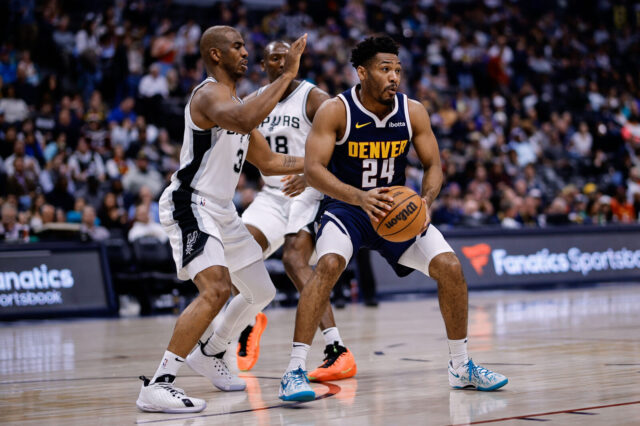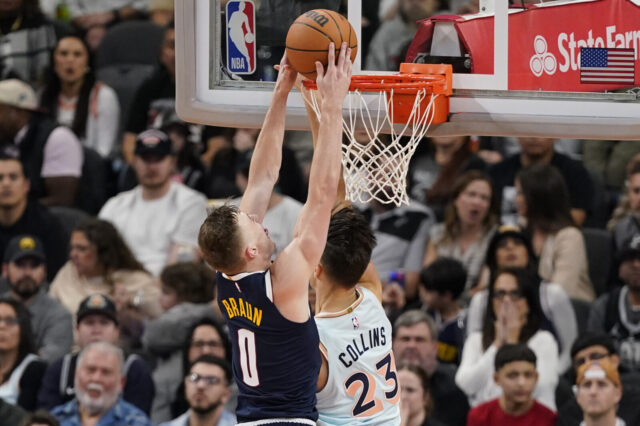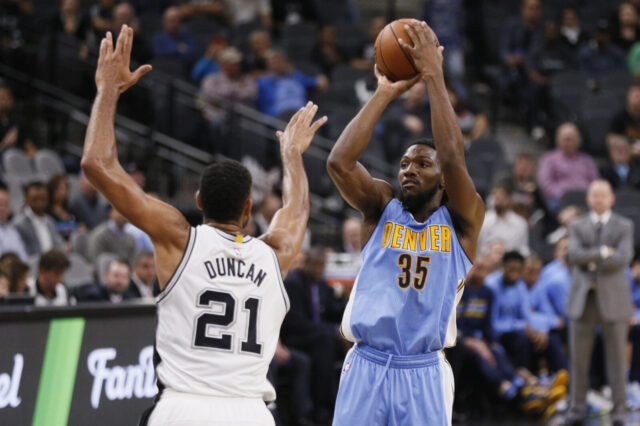The Denver Nuggets haven’t won more than twenty-two games at home over a course of a season since 2012-2013 when they won all but three of them. Since then they’ve won 22, 18, 19 and 22 each following season. A far cry from what was once considered one of the most dominant homecourt advantages in the league (though the subpar record didn’t stop rival execs from still viewing Denver as one of the toughest places to play). There’s a lot of factors that go into it, in the Brian Shaw era there was a departure from the running style that can be so effective at altitude, the team in general was less talented than it had been the previous ten years and eventually a shift towards youth threw the Nuggets into the land of rebuilding which hurt their on court product and also their reputation among the fans. All of that had a part to play in an empty Pepsi Center more often than not.
The altitude and running style is without a doubt the largest contributor to the Nuggets advantage. Whether the notion that players are so overwhelmingly affected by the elevation that it makes them play poorly is real or imagined, the effect it has on an opposing team mentally is still the same. Whether or not they come to Denver and play in front on 17,000 rowdy Nuggets fans or 10,000 disinterested Nuggets fans and 4,000 of their own fans probably doesn’t change that mentality much either way. However, attendance does have an effect of the players mentality for the home team.
Just recently after the Nuggets defeated the Memphis Grizzlies handedly to the delight of a raucous crowd Gary Harris noted how much of a difference it makes to have the fans at his back, stating “the fans come out with a lot of energy every time and it makes us play harder…I’ve been here when we didn’t have too many fans, so just to see them fill the stands makes you go a little harder.” Jamal Murray noticed too “Homecourt is an advantage, fans have stepped up their game, and it helps.”
Coach Malone, Kenneth Faried, Nikola Jokic and others have all made comments (repeated in the case of Malone and Faried) regarding the crowd and how it’s been much better this year. The numbers are certainly there to back it up as well. Classically, when Denver was in they heyday of the Carmeo Anthony era, they averaged just over 17k in attendance per game, about 1500 butts shy of a sellout. Those numbers certainly weren’t the benchmark for the league, but it registered right around better than half the league and missing roughly 8% of maximum capacity didn’t really change the feeling of a sellout vs not a sellout. However, when the going got rough the fans got going…to places other than the Pepsi Center. Attendance dipped closer to 14k for the subsequent seasons following Denver’s fall off from playoff contention. The cavernous feeling (or sometimes downright road feeling) of the Nuggets home arena hit rock bottom when the team was league worst in attendance for the second season in a row last year.
A lot was written about the fickle Denver sports fan’s exodus from Pepsi Center, and the fans took a lot of the heat, whether from the media or from the frankly honest assessments of the crowds by the players. However, they really shouldn’t have had to take any of the blame. The Nuggets made a choice in 2013 that just making the first round of the playoffs wasn’t good enough and then subsequent choices the organization made led to the attendance spiraling out of control. They let their GM walk and fired their hall of fame coach, all on the heels of the most successful regular season ever. Naturally, that upset a lot of fans. The subsequent hiring of Brian Shaw, the concerted effort to move away from the free flowing “random basketball” that not only had made the Nuggets so successful at home but also so exciting to watch, and the refusal to lower ticket prices despite furnishing an inferior product doubled down on the fans (justifiable) unwillingness to shell out $50 per person (on average) to come watch the Nuggets get their butts kicked while playing a boring brand of basketball.
Once the fans were lost, they weren’t going to just come back because of an effort by KSE to make the Pepsi Center a more fun place to be. Despite expansions in the concessions, a massive new video jumbotron, the addition of the swank Club Lexus, expanded wifi and other efforts, fans still cared the most about seeing a product that was worth watching. It’s why the Nuggets had no problems selling out games against the Golden State Warriors or Boston Celtics or even the Los Angeles Lakers. The problem was never the arena, it was always the product on the court. Jokic changed all that last season. Despite recording a 4th straight losing record, the fun and excitement was back behind a offense that now flowed around the Nuggets star center who has a knack for finding cutters in the most imaginative ways.
Denver fans didn’t figure it out overnight. After all, as good as Jokic is he’s not great from a marketing stand point, especially in a town like Denver who cringes with memories of Nikoloz Tskitishvili and Efthimios Rentzias anytime they hear a basketball surname that sounds remotely European. Last season as Jokic was breaking out the Pepsi Center remained half to three quarters full, often time with fans of the opposing team. However, it’s now 25% of the way through the Nuggets slate of home games and the returns indicate that the casual Denver fan is figuring it out. The Nuggets still rank towards the bottom of the league in attendance but they are a far cry from the worst. They are averaging 16,673 in attendance per ESPN.com, 23rd overall in the NBA but also just a few hundred shy of their Melo era levels.
Beyond the raw numbers, the energy is back as well. Last Friday night was a perfect example. Though it was a Friday, it was just a day after Thanksgiving where most prefer to either spend the day digesting their big meal or out and about shopping until they drop for bargain deals, but the fans showed up for the game and cheered their butts off none the less. Last year the day after Thanksgiving registered 14,327 fans for a home contest against a playoff team with an MVP candidate in the Oklahoma City Thunder. This year 16,736 showed up to watch the Nuggets beat up on a banged up and struggling Memphis Grizzlies team. Point being, the surge in attendance is real and is a result of Denver fans coming back to the Pepsi Center, not the result of any schedule quirks.
The chants for MVP are for Jokic now, not Russell Westbrook. No one is leaving with 3 minutes to go in a tie game (though they do still find the exits early in the blowouts). The arena doesn’t feel uneasy, like fans aren’t sure if its the right time to cheer. It feels like an educated crowd and most importantly, a Nuggets crowd. The team is doing their part was well. With an 8-2 home record Denver is back to being one of the toughest courts to visit in the Association the fans are getting to see their team win more often than not. Obviously the players do the vast majority of the heavy lifting but the crowds are doing their part too and for that, they deserve to be praised.


